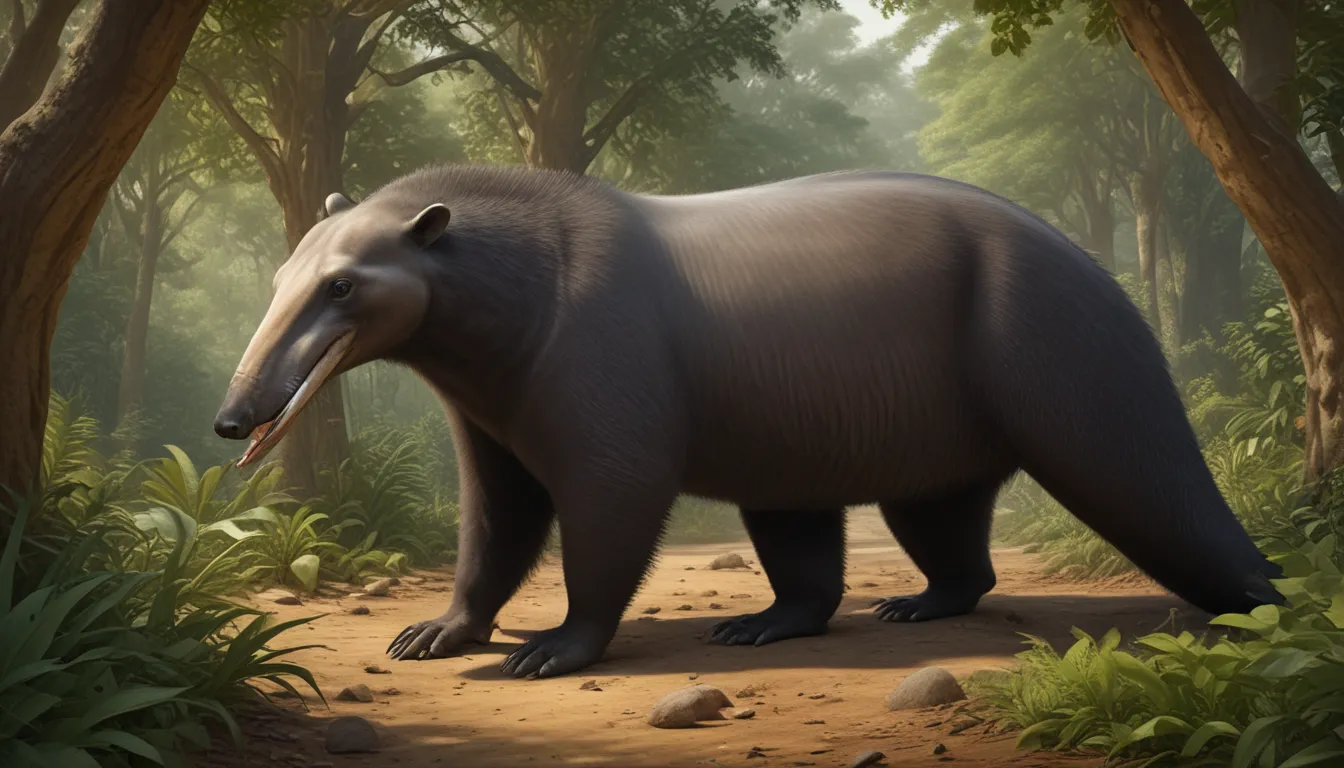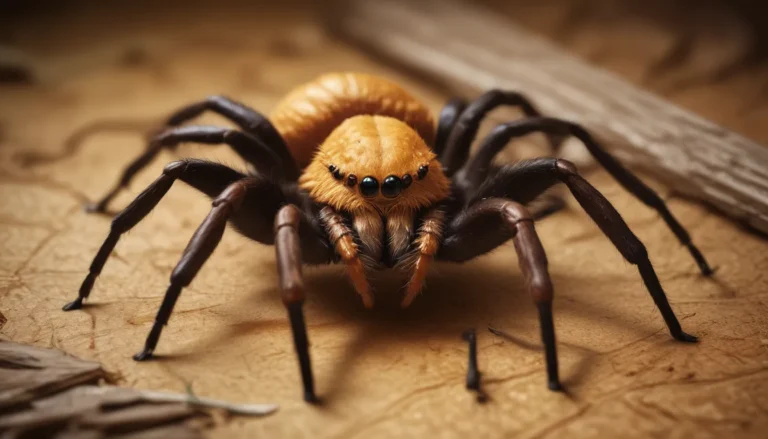The pictures we use in our articles might not show exactly what the words say. We choose these pictures to make you interested in reading more. The pictures work together with the words but don’t take their place. The words still tell you the important facts.
Are you ready to embark on a journey into the unique world of the giant anteater? This extraordinary mammal, with its distinctive features and intriguing behaviors, is sure to captivate your interest. From its impressive size and feeding habits to its vital role in maintaining ecosystem balance, the giant anteater is a true marvel of the animal kingdom. Join us as we delve into 16 fascinating facts about this remarkable creature that will inspire awe and admiration.
Discovering the World of the Giant Anteater
Giant anteaters, scientifically known as Myrmecophaga tridactyla, are captivating creatures with a host of unique physical features. Their long snouts, bushy tails, and distinctive fur patterns set them apart in the animal kingdom. With their sharp claws designed for digging into anthills and termite mounds, giant anteaters are well-equipped for their insectivorous diet. Their long, tubular-shaped heads boast distinct black and white markings, adding to their striking appearance.
Unveiling the Impressive Size of the Giant Anteater
Measuring between 5 to 7 feet in length, including their tail, giant anteaters are among the largest species of anteaters. Despite their substantial size, they are relatively lightweight due to their slender frame, weighing anywhere from 40 to 140 pounds. Males typically outweigh females, showcasing the variability within this fascinating species.
Peering into the World of Insectivores: The Diet of the Giant Anteater
Giant anteaters are insectivorous animals, specializing in feeding on ants and termites. Their long, sticky tongues, capable of extending up to two feet, are essential for capturing and consuming their prey. An adult anteater can devour up to a staggering 30,000 insects in a single day, showcasing their remarkable feeding abilities.
Uncovering the Toothless Wonder: How Giant Anteaters Consume Their Prey
One intriguing fact about giant anteaters is that they do not possess teeth. Instead, they rely on their robust jaws and sticky tongues to swallow insects whole. Their stomachs are uniquely adapted to process the tough exoskeletons of their tiny prey, highlighting their specialized digestive system.
Delving into Solitary Lives: The Social Behavior of Giant Anteaters
Giant anteaters prefer a solitary lifestyle, choosing to live alone rather than in groups. They establish large territories marked by releasing a potent odor from glandular secretions, ranging from 1 to 10 square miles depending on food availability. Despite their independent nature, these creatures play a crucial role in maintaining ecosystem balance.
Unveiling Their Aquatic Abilities: The Surprising Skills of Giant Anteaters
Contrary to their terrestrial nature, giant anteaters are adept swimmers, showcasing their versatility. Using their long snouts as snorkels, they navigate rivers and bodies of water with ease. Swimming serves not only as a means of transportation but also as a method of cooling down in hot climates, expanding their adaptability.
Exploring Reproductive Rhythms: The Slow Rate of Giant Anteater Reproduction
Female giant anteaters exhibit a slow reproductive rate, giving birth to a single offspring, known as a pup, every two to three years. The pup accompanies its mother, riding on her back for several months until it is ready to explore the world independently. This unique reproductive strategy contributes to the conservation of the species.
Understanding the Tongue-Twisting Talents: The Elongated Tongue of the Giant Anteater
The defining feature of giant anteaters, their long, sticky tongue is a marvel of nature. Coated with adhesive saliva, their tongues can flick in and out up to 150 times per minute, enabling them to capture insects with precision. This remarkable adaptation underscores their efficient feeding strategy.
Embracing the Night: The Nocturnal Lifestyle of Giant Anteaters
Primarily nocturnal creatures, giant anteaters are most active during the nighttime, relying on their exceptional night vision and sense of smell to hunt for prey. Their nocturnal habits enhance their survival in their natural environment, demonstrating their adaptability to varying conditions.
Defending with Fierceness: The Unique Defense Mechanism of Giant Anteaters
When threatened, giant anteaters exhibit a distinctive defense mechanism, rearing up on their hind legs and utilizing their powerful front claws for protection. This intimidating display, coupled with their strong tail for balance, serves as a deterrent to potential predators, highlighting their resourcefulness in the face of danger.
Confronting Conservation Challenges: The Decline of Giant Anteater Populations
Giant anteaters are currently facing a decline in population due to habitat loss and fragmentation, posing significant threats to their survival. Deforestation and agricultural expansion encroach upon their natural habitats, underscoring the need for conservation efforts to safeguard this extraordinary species.
Embracing Longevity: The Lifespan of Giant Anteaters
With an average lifespan of around 15 years in the wild, giant anteaters can live up to 20 years in captivity under favorable conditions. Environmental factors and food availability play a crucial role in determining their longevity, highlighting the impact of their habitat on their lifespan.
Navigating by Scent: The Exceptional Sense of Smell of Giant Anteaters
Giant anteaters possess an exceptional sense of smell, utilizing it to locate ant and termite colonies with precision. Their specialized organ, the Jacobson's organ, enables them to detect chemical cues emitted by their prey, enhancing their hunting efficiency in their quest for food.
Preserving Ecosystem Harmony: The Critical Role of Giant Anteaters
Giant anteaters play a vital role in ecosystem balance by controlling insect populations. Their insatiable appetite for ants and termites helps regulate the numbers of these small but abundant creatures, preventing potential disruptions to the delicate ecological equilibrium. Their contribution underscores the significance of their presence in their natural habitats.
Upholding Protection: The Status of Giant Anteaters as Protected Species
Recognized as "vulnerable" by the International Union for Conservation of Nature (IUCN) Red List, giant anteaters are protected under various laws and international agreements. It is illegal to hunt or trade these remarkable creatures without appropriate permits, emphasizing the need for stringent conservation measures to safeguard their future.
Marveling at Nature’s Artistry: The Captivating Patterns of Giant Anteaters
Giant anteaters boast uniquely patterned fur, with each individual displaying distinct swirls and markings that serve as identification features. Similar to human fingerprints, these swirls are specific to each anteater, showcasing the diversity and beauty of these magnificent creatures.
In conclusion, the giant anteater stands as a testament to nature's innovation and diversity, captivating onlookers with its exceptional features and behaviors. From its intricate feeding strategies to its crucial role in ecosystem maintenance, the giant anteater embodies the beauty and complexity of the natural world. As we strive to preserve and protect these remarkable creatures, let us celebrate their existence and work towards securing a future where they can thrive alongside us in harmony.
FAQs About Giant Anteaters
- Q: What is the size of a giant anteater?
-
A: Giant anteaters can grow up to 7 feet long, including their long tails, and can weigh between 60 to 90 pounds.
-
Q: How do giant anteaters catch and eat ants?
-
A: Giant anteaters have a long snout and a sticky tongue that can extend up to two feet. They use their strong claws to break open ant nests and then use their long tongue to lap up the ants.
-
Q: What is the primary habitat of giant anteaters?
-
A: Giant anteaters are primarily found in the grasslands, savannas, and tropical forests of Central and South America.
-
Q: Are giant anteaters social animals?
-
A: Giant anteaters are generally solitary animals, except during mating season. However, they may tolerate the presence of other giant anteaters in their range.
-
Q: Are giant anteaters endangered?
- A: Yes, giant anteaters are considered vulnerable to extinction due to habitat loss and hunting. It is important to protect their natural habitats and reduce human-wildlife conflict to ensure their survival.
Join us in exploring the captivating world of giant anteaters and unraveling the mysteries of these awe-inspiring creatures. As we delve deeper into their lives and habitats, let us embrace the wonder and beauty of nature's creations, cherishing and protecting them for generations to come.






